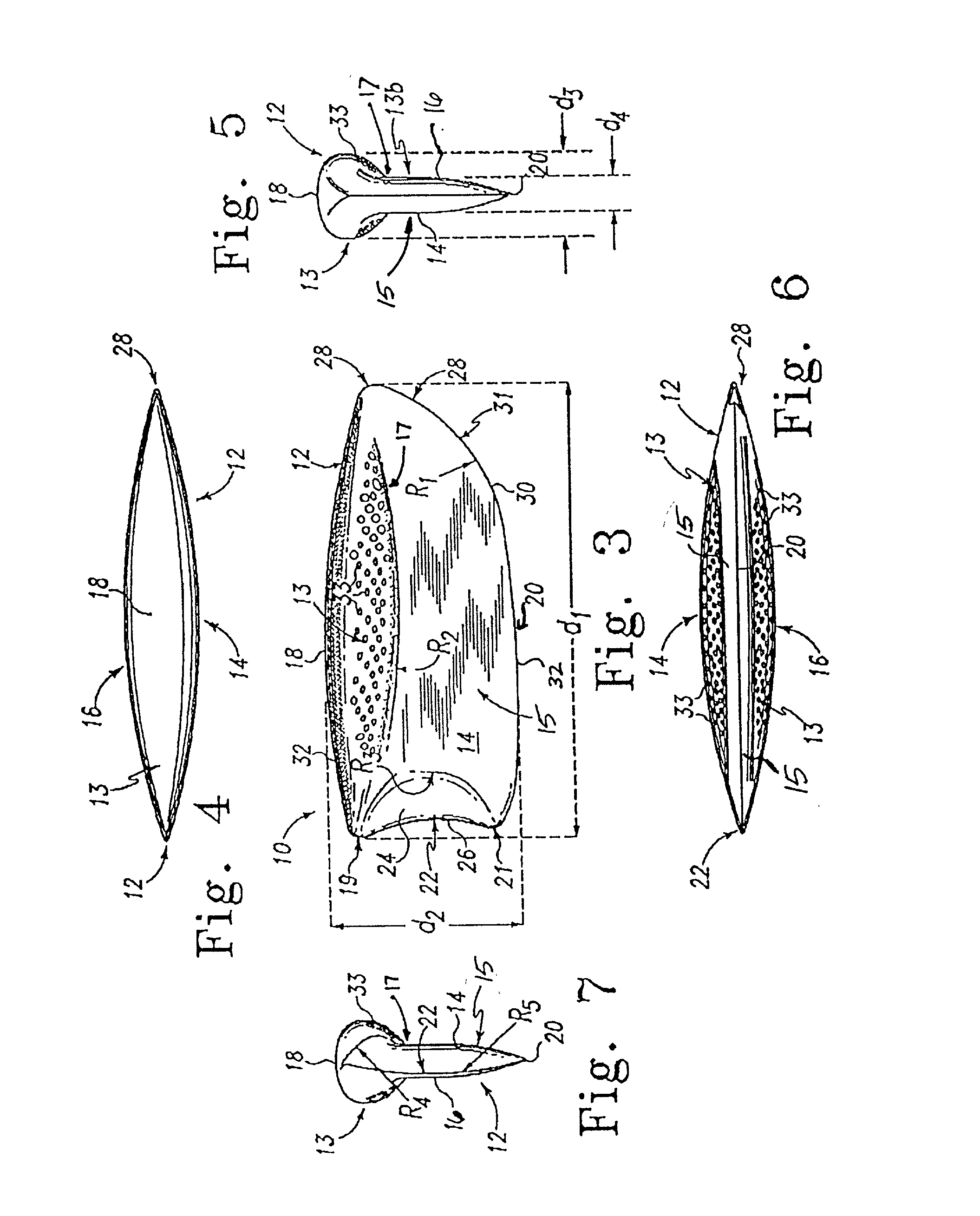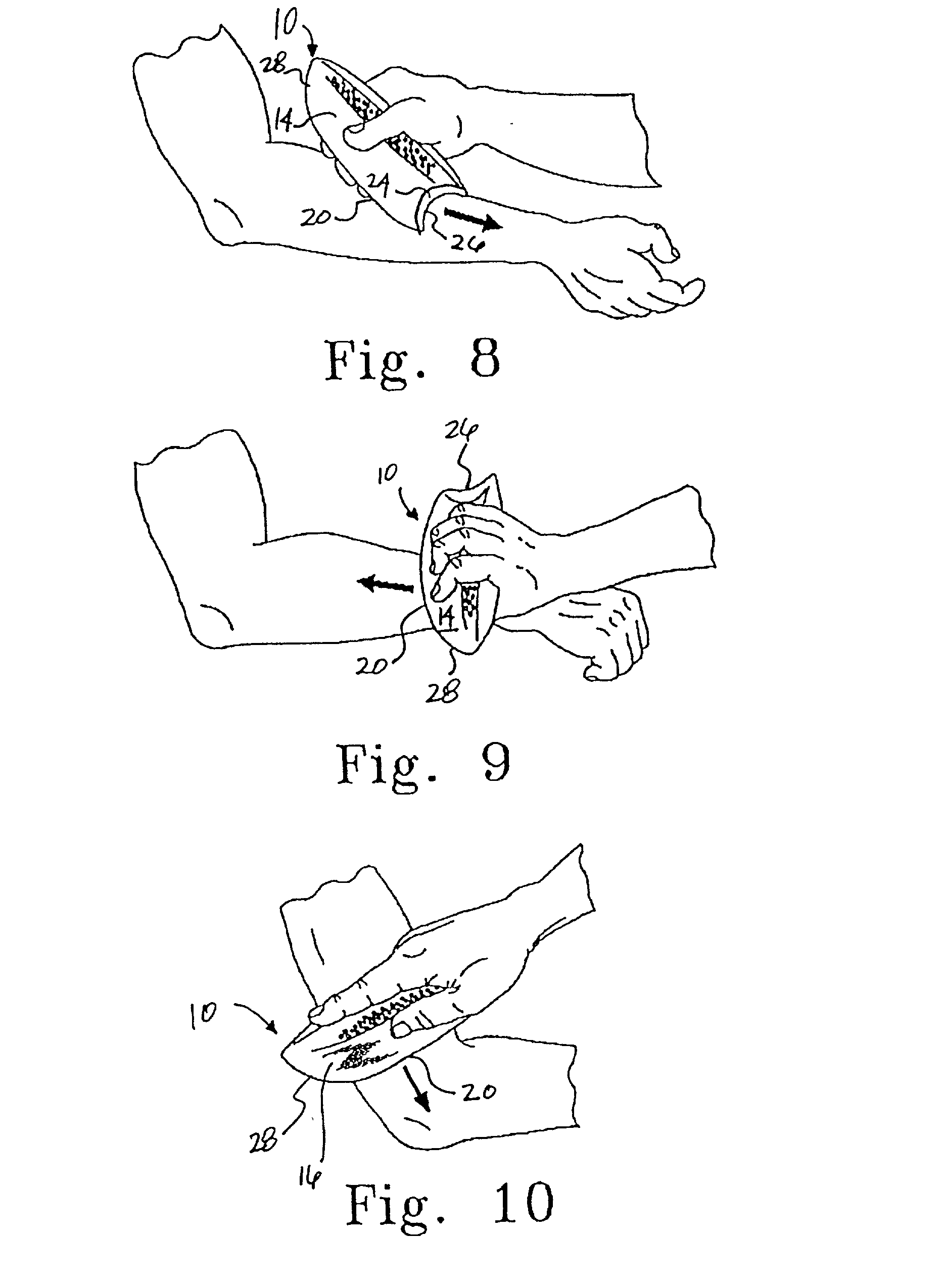Instruments for diagnosing and treating fibrotic soft tissues
a soft tissue and instrument technology, applied in the direction of physical therapy, massage, cleaning using liquids, etc., can solve the problems of microtearing, inflammation, scarring, and reaggravation of soft tissue during normal us
- Summary
- Abstract
- Description
- Claims
- Application Information
AI Technical Summary
Benefits of technology
Problems solved by technology
Method used
Image
Examples
Embodiment Construction
[0048] Referring to the drawings, wherein like reference numerals designate identical or corresponding parts and elements throughout the several views, this invention provides a first embodiment of an instrument 10 shown in FIGS. 1-10, a second embodiment of an instrument 40 shown in FIGS. 11-20, and a third embodiment of an instrument 80 shown in FIGS. 21-27, where each such instrument can be employed in the diagnosis of fibrotic soft tissue conditions and their treatment through soft tissue mobilization therapies.
[0049] Referring now to FIGS. 1-7, instrument 10 comprises a graspable unitary rigid body 12 comprising an upper handle portion 13, a lower massaging portion 15 formed by a pair of sides 14 and 16 converging from the upper handle portion 13, and a peripheral edge 30 extending about the circumference of the instrument body 12. The circumferential peripheral edge 30 can be defined by a curvilinear edge including a concave leading edge 22 and a convex rear edge 28 disposed o...
PUM
 Login to View More
Login to View More Abstract
Description
Claims
Application Information
 Login to View More
Login to View More - R&D
- Intellectual Property
- Life Sciences
- Materials
- Tech Scout
- Unparalleled Data Quality
- Higher Quality Content
- 60% Fewer Hallucinations
Browse by: Latest US Patents, China's latest patents, Technical Efficacy Thesaurus, Application Domain, Technology Topic, Popular Technical Reports.
© 2025 PatSnap. All rights reserved.Legal|Privacy policy|Modern Slavery Act Transparency Statement|Sitemap|About US| Contact US: help@patsnap.com



